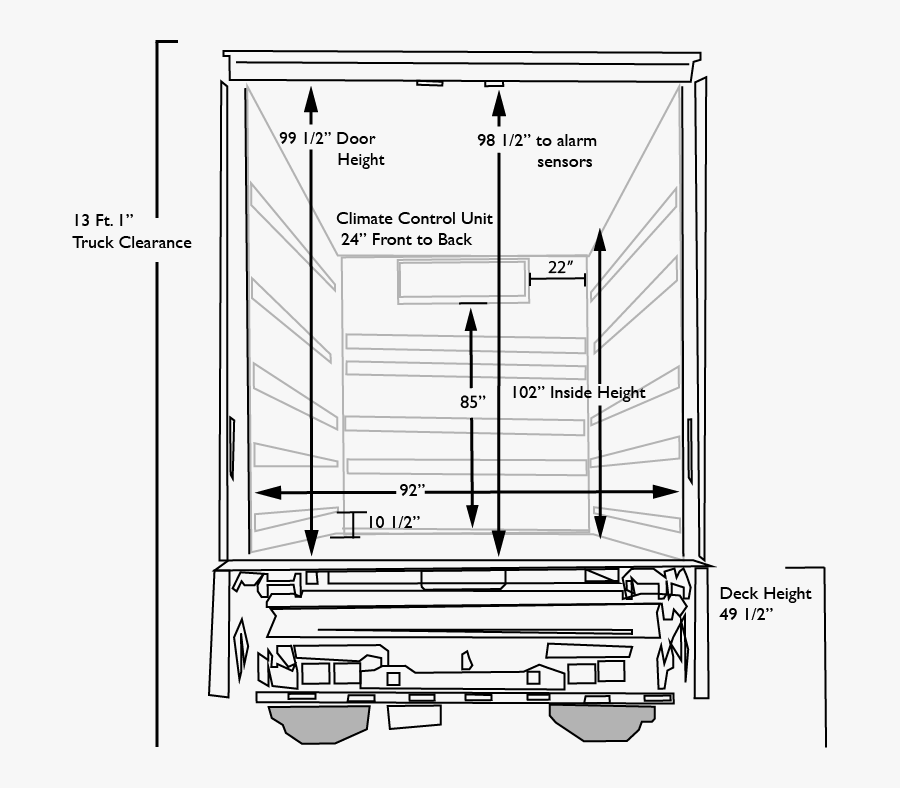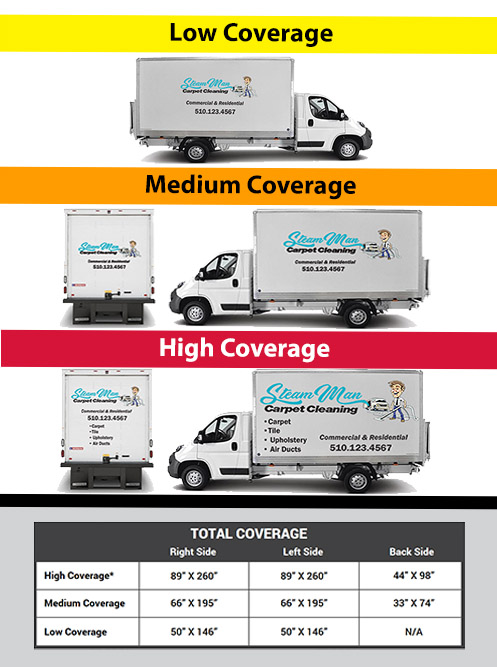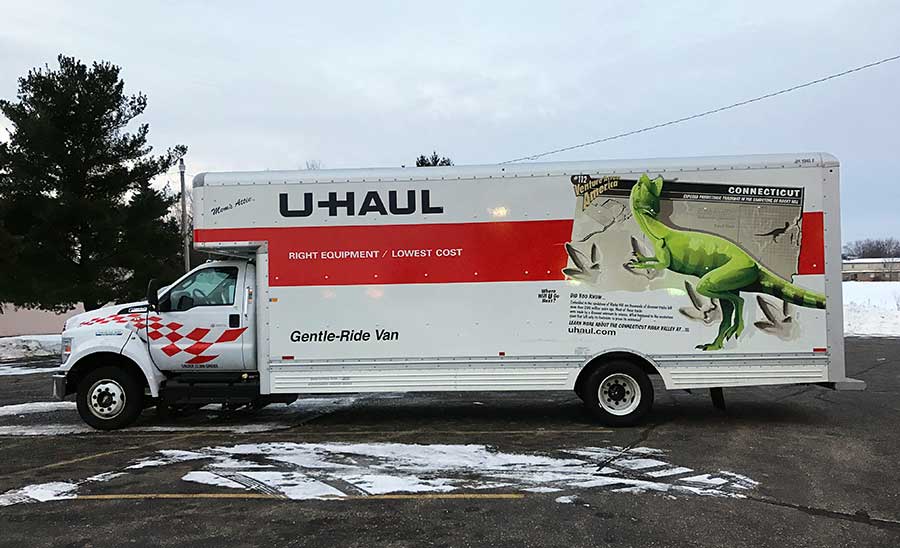- Get link
- X
- Other Apps
- Get link
- X
- Other Apps
The Ultimate Guide to 26-Foot Box Truck Dimensions: Everything You Need to Know Usedtruck.Truckstrend.Com
The workhorse of the moving and delivery industries, the 26-foot box truck is a versatile vehicle that bridges the gap between smaller cargo vans and larger semi-trucks. Understanding the specific dimensions of a 26-foot box truck is crucial for anyone involved in logistics, transportation, or even planning a personal move. From calculating load capacity to navigating tight city streets, these measurements directly impact operational efficiency, safety, and ultimately, the bottom line. This comprehensive guide delves into the intricate details of 26-foot box truck dimensions, providing you with the knowledge to make informed decisions and optimize your use of this popular vehicle.
Why Understanding 26-Foot Box Truck Dimensions Matters
The Ultimate Guide to 26-Foot Box Truck Dimensions: Everything You Need to Know
Before we dive into the specifics, let's understand why knowing these dimensions is so important:
- Cargo Planning: Accurate dimensions are essential for calculating how much cargo you can safely and efficiently transport. This includes volume, weight, and the ability to accommodate oddly shaped or oversized items.
- Route Planning: Knowing the height and width of the truck allows you to plan routes that avoid low bridges, narrow roads, and other obstacles. This minimizes delays, prevents accidents, and ensures timely deliveries.
- Loading Dock Compatibility: Understanding the truck's height is crucial for ensuring compatibility with loading docks. This prevents damage to the truck and the loading dock and streamlines the loading and unloading process.
- Legal Compliance: Exceeding weight limits or violating size restrictions can result in hefty fines and legal repercussions. Knowing the truck's dimensions and weight capacity helps you stay compliant with regulations.
- Cost Optimization: Efficient cargo planning and route optimization translate to lower fuel consumption, reduced wear and tear on the vehicle, and ultimately, cost savings.
- Safety: Knowing the dimensions helps you maneuver the truck safely in various environments, reducing the risk of accidents and injuries.

Breaking Down the Dimensions: A Comprehensive Overview
The term "26-foot box truck" refers to the interior length of the cargo area. However, there are many other important dimensions to consider:
- Interior Length: This is the primary measurement that defines the truck. It typically ranges from 24 to 26 feet (288 to 312 inches). The exact length can vary slightly depending on the manufacturer and model.
- Interior Width: The interior width is typically around 8 feet (96 inches), but can vary between 90 and 100 inches. This dimension significantly impacts the truck's ability to accommodate wider items.
- Interior Height: This is a crucial dimension for taller cargo. It typically ranges from 8 to 8.5 feet (96 to 102 inches). Be sure to account for any interior features like tie-down rails or shelving that may reduce the usable height.
- Exterior Length: The overall length of the truck, including the cab and any rear bumpers, is typically around 28 to 30 feet. This is important for parking and maneuvering in tight spaces.
- Exterior Width: The exterior width is usually around 8.5 feet (102 inches), including the mirrors. This is a standard width for commercial vehicles and is regulated by law.
- Exterior Height: The exterior height is typically around 12 to 13 feet. This is a critical dimension for route planning, as it determines whether the truck can pass under bridges and overpasses.
- Door Opening Height: The height of the rear door opening is usually slightly less than the interior height, typically around 90 to 96 inches. This is the maximum height of cargo that can be loaded through the rear door.
- Door Opening Width: The width of the rear door opening is typically close to the interior width, around 90 to 96 inches.
- Ground Clearance: The ground clearance is the distance between the bottom of the truck and the ground. This varies depending on the model but is typically around 8 to 10 inches. This is important for navigating uneven terrain or ramps.
- Gross Vehicle Weight Rating (GVWR): This is the maximum allowable weight of the truck, including the cargo, passengers, and fuel. A typical 26-foot box truck has a GVWR of around 26,000 pounds.
- Payload Capacity: This is the maximum weight of cargo that the truck can carry. It is calculated by subtracting the truck's empty weight (also known as curb weight) from the GVWR.
- Curb Weight: The weight of the truck without any cargo or passengers.
- Wheelbase: The distance between the front and rear axles. This affects the truck's turning radius and stability.
- Turning Radius: The minimum amount of space required to make a complete turn.
- Fuel Tank Capacity: This affects the truck's range and the frequency of refueling stops.
- Number of Axles: Most 26-foot box trucks have two axles.
- Tire Size: This affects the truck's handling and load capacity.
- Brake Type: Air brakes are common on larger box trucks.
- Suspension Type: The type of suspension affects the ride quality and handling.
- Engine Type: Diesel engines are common for their power and fuel efficiency.
- Transmission Type: Automatic or manual transmissions are available.
- Seating Capacity: Typically, a 26-foot box truck has seating for two or three people.
- Mirror Dimensions: The size and placement of the mirrors are important for visibility.
- Step Height: The height of the steps leading into the cargo area.
- Ramp Length and Width (if equipped): If the truck has a ramp, its dimensions are important for loading and unloading cargo.
- Tailgate Dimensions (if equipped): If the truck has a tailgate, its dimensions are important for loading and unloading cargo.


Practical Tips for Utilizing 26-Foot Box Truck Dimensions
- Always Verify Dimensions: Never rely solely on general specifications. Always verify the actual dimensions of the specific truck you are using.
- Use a Measuring Tape: Accurately measure the cargo you intend to transport to ensure it fits within the truck's dimensions.
- Consider Weight Distribution: Distribute the cargo evenly throughout the truck to maintain stability and prevent overloading the axles.
- Secure Your Load: Properly secure your cargo using straps, tie-downs, and other securing devices to prevent it from shifting during transit.
- Plan Your Route Carefully: Use GPS navigation and online mapping tools to plan your route and avoid low bridges, narrow roads, and other obstacles.
- Practice Safe Driving: Be aware of the truck's size and weight and drive defensively.
- Obey Traffic Laws: Adhere to all traffic laws and regulations, including speed limits and weight restrictions.
- Regular Maintenance: Ensure the truck is properly maintained to prevent breakdowns and ensure safe operation.
Potential Challenges and Solutions
- Limited Maneuverability: 26-foot box trucks can be challenging to maneuver in tight spaces. Solution: Practice maneuvering in a safe area before operating the truck in congested environments. Use spotters when backing up or turning in tight spaces.
- Height Restrictions: Low bridges and overpasses can pose a significant challenge. Solution: Carefully plan your route and use GPS navigation systems that provide height warnings.
- Weight Limits: Overloading the truck can damage the vehicle and result in fines. Solution: Weigh your cargo before loading it onto the truck and ensure you do not exceed the GVWR or axle weight limits.
- Fuel Consumption: Box trucks can consume a significant amount of fuel. Solution: Drive at a consistent speed, avoid unnecessary acceleration and braking, and properly maintain the truck.
Frequently Asked Questions (FAQ)
- Q: What is the typical payload capacity of a 26-foot box truck?
- A: The payload capacity varies depending on the truck's GVWR and curb weight. Typically, it ranges from 8,000 to 10,000 pounds.
- Q: Can I drive a 26-foot box truck with a regular driver's license?
- A: In most states, a regular driver's license is sufficient to operate a 26-foot box truck, as long as the GVWR is under 26,001 pounds. However, it's always best to check your local regulations.
- Q: How much does it cost to rent a 26-foot box truck?
- A: Rental costs vary depending on the rental company, location, and duration of the rental. Expect to pay anywhere from $150 to $300 per day, plus mileage fees.
- Q: What is the difference between a 24-foot and a 26-foot box truck?
- A: The primary difference is the interior length of the cargo area. A 26-foot box truck offers approximately two additional feet of cargo space compared to a 24-foot truck.
Table: 26-Foot Box Truck Dimensions & Specifications (Typical Ranges)
| Dimension/Specification | Typical Range | Importance |
|---|---|---|
| Interior Length | 24-26 feet (288-312 in) | Cargo capacity, fitting long items |
| Interior Width | 90-100 inches | Cargo capacity, fitting wide items |
| Interior Height | 96-102 inches | Cargo capacity, fitting tall items |
| Exterior Length | 28-30 feet | Parking, maneuvering in tight spaces |
| Exterior Width | 102 inches | Road restrictions, lane width |
| Exterior Height | 12-13 feet | Bridge clearances, overpasses |
| Door Opening Height | 90-96 inches | Loading/unloading tall items |
| Door Opening Width | 90-96 inches | Loading/unloading wide items |
| Ground Clearance | 8-10 inches | Navigating uneven terrain |
| GVWR | ~26,000 pounds | Legal weight limits, safe operation |
| Payload Capacity | 8,000-10,000 pounds | Maximum cargo weight |
| Curb Weight | ~16,000-18,000 pounds | Influences payload capacity |
| Wheelbase | Varies | Turning radius, stability |
| Turning Radius | Varies | Maneuvering in tight spaces |
| Fuel Tank Capacity | Varies | Range between refueling stops |
| Number of Axles | 2 | Weight distribution, stability |
| Tire Size | Varies | Load capacity, handling |
| Brake Type | Air brakes (common) | Stopping power, safety |
| Suspension Type | Varies | Ride quality, handling |
| Engine Type | Diesel (common) | Power, fuel efficiency |
| Transmission Type | Automatic or Manual | Driver preference, ease of use |
| Seating Capacity | 2-3 | Number of occupants |
| Mirror Dimensions | Varies | Visibility, safety |
| Step Height | Varies | Ease of access to cargo area |
| Ramp Length and Width (if equip) | Varies | Loading/unloading heavy items |
| Tailgate Dimensions (if equip) | Varies | Loading/unloading items |
Conclusion
Understanding the dimensions of a 26-foot box truck is paramount for efficient and safe transportation. By carefully considering these measurements, you can optimize cargo planning, route selection, and overall operational efficiency. This guide provides a comprehensive overview of the key dimensions and specifications, empowering you to make informed decisions and maximize the potential of this versatile vehicle. Remember to always verify the specific dimensions of the truck you are using and prioritize safety in all aspects of operation. With the right knowledge and preparation, you can confidently navigate the world of 26-foot box trucks and achieve your transportation goals.
- Get link
- X
- Other Apps
Comments
Post a Comment